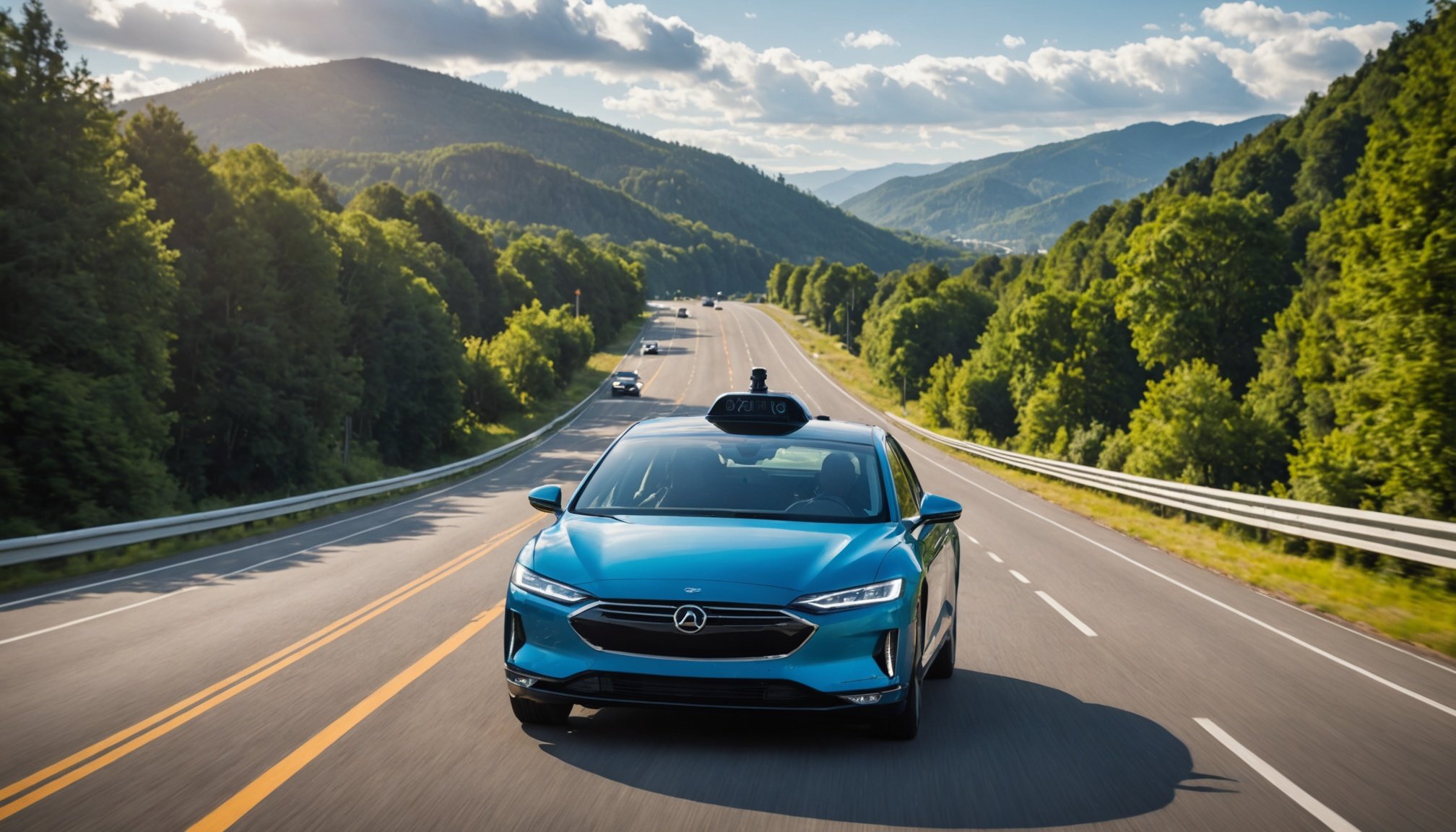Overview of Autonomous Driving Technology
Autonomous Driving is at the forefront of automotive innovation, with recent years witnessing significant technology advancements. From refined sensors to enhanced processing capabilities, these advancements are transforming how vehicles navigate and interact with their environment. Artificial Intelligence (AI) and machine learning are pivotal in this evolution, as they endow vehicles with the ability to interpret complex scenarios with human-like comprehension. This includes recognising traffic patterns and predicting potential hazards.
Moreover, the role of AI extends beyond mere navigation; it’s integral to decision-making systems that ensure safety and efficiency. These intelligent systems harness vast datasets to learn and adapt over time, resulting in continuous improvement in their operational proficiency.
Looking ahead, the future outlook is promising with expectations of fully autonomous vehicles becoming mainstream. Industry forecasts suggest a closer integration of autonomous driving features with infrastructure advancements, leading to a seamless blend of technology and transportation. Autonomous buses and shuttles, for example, may soon become commonplace in urban settings, promoting enhanced safety and sustainable mobility.
As technology continues to evolve, the interplay between human input and vehicle intelligence is likely to set new benchmarks in automotive innovation.
This might interest you : Discover the Game-Changing Trends in Automotive Technology You Can’t Afford to Miss;158How Green Laws Are Driving Change in the Auto Industry for a Sustainable Future
Expert Opinions on Future Trends
In discussing future trends in the automotive industry, expert insights offer valuable perspectives on the rapid advancements in autonomous driving innovations. Industry leaders are bullish on the role of AI and machine learning, seeing them as crucial for developing more sophisticated and reliable autonomous systems. As technology becomes more integrated, it’s predicted that vehicles will be able to self-improve through continuous data analysis, enhancing both safety and user experience.
Automotive predictions from experts also focus on regulatory changes. It’s expected that these will evolve to accommodate new technologies, potentially making roads safer and reducing emissions. This shift will require manufacturers to balance innovation with compliance, navigating complex legislation effectively. Anticipated adaptations may include updates in vehicle design and the incorporation of eco-friendly technologies.
Public perception is another crucial element that experts believe will shape future automotive developments. Consumer trust and acceptance are essential for the widespread adoption of autonomous vehicles. Companies might therefore invest in transparency and education to foster confidence in these new technologies, ensuring smoother transitions.
As the landscape transforms, industry players must remain adaptable, leveraging new technologies to drive sustainable and consumer-friendly automotive progress.
Environmental Regulations and Their Impact on the Automotive Industry
The automotive industry is significantly influenced by evolving environmental regulations aimed at promoting sustainability. These regulations primarily target emission reductions, propelling automakers to innovate and adapt. Key legislation, such as the Clean Air Act in the U.S., mandates stringent emissions standards, compelling manufacturers to rethink vehicle design and production processes. Consequently, there’s a noticeable shift towards hybrid and electric vehicles (EVs) as a direct response to these stringent requirements.
Emissions standards have led to technological advancements in engine efficiency and the development of alternative fuels. The focus isn’t only on meeting current limits but also anticipating future updates to regulations. This adaptation ensures that manufacturers remain competitive while contributing to environmental preservation.
The push for EVs has been a game-changer. By investing in electric vehicle technology, automakers are addressing regulatory demands while catering to the rising consumer preference for eco-friendly transportation. The shift is not merely a compliance effort but a broader strategy towards sustainable mobility.
Ultimately, the intricate balance between innovation and regulation is shaping new industry dynamics, pushing for more sustainable practices in automotive manufacturing.
The Interplay Between Autonomous Technology and Environmental Goals
The union of autonomous technology with environmental objectives offers promising potential. Autonomous vehicles, designed with precision, can minimize emissions through efficient driving patterns. These vehicles help reduce traffic congestion and idling time, cutting down fuel consumption and lowering overall emissions. Technology advancements integrated with machine learning allow these systems to analyze and optimize routes.
The synergy of autonomous vehicles with renewable energy can further propel sustainable mobility. For example, electric autonomous vehicles (EVs) can be powered by solar or wind energy, reducing reliance on fossil fuels. This combination supports the transition towards a cleaner, greener environment.
Moreover, smart urban planning is integral to realizing these goals. Cities can benefit from autonomous transportation solutions that minimize the carbon footprint of public transit systems. Shared autonomous shuttles might replace traditional buses. The data-driven insight from vehicle operations can inform urban designers on optimizing infrastructure.
In essence, harnessing the power of autonomous technology, while prioritizing sustainability, lays the foundation for an environmentally conscious future. Industry players must collaborate on this front, championing innovation that aligns with ecological aspirations.
Industry Case Studies: Successes and Challenges
Autonomous driving has seen a varied range of implementations globally, providing valuable industry insights into its potential and hurdles. For instance, Waymo’s successful deployment of autonomous taxi services in Phoenix highlights significant advancements, emphasizing technological prowess and deep learning applications that enhance real-world navigation. However, many automakers face challenges in balancing innovation with regulatory compliance. Navigating the intricate landscape of safety regulations and public trust can be demanding, often requiring extensive testing and transparent communication to gain acceptance.
Tesla exemplifies a leader in sustainability efforts, focusing on integrating electric powertrains with autonomous tech, but has faced scrutiny over autopilot system safety, reflecting the challenges in real-time adaptability and risk management. Comparative analysis shows that companies like Ford invest heavily in R&D, collaborating with AI firms to bolster their autonomous capabilities, underscoring the trend towards partnerships to share knowledge and risk.
These case studies reveal that while substantial progress in autonomous driving technology is evident, balancing technological advancement and regulatory adherence remains a formidable task. Collaborations and adaptive strategies are essential for long-term success in aligning with both innovation goals and compliance mandates.
Actionable Insights for Stakeholders
In the evolving automotive sector, adapting to environmental regulations is crucial. Developers should prioritize integrating sustainability within autonomous vehicle designs. This involves focusing on technologies that enhance fuel efficiency and reduce emissions. Leveraging cutting-edge AI systems can help in optimizing energy consumption, ensuring compliance with stringent standards.
Strategies for policymakers are vital in advancing sustainable innovation. By providing incentives for eco-friendly technologies, policymakers can stimulate industry growth while maintaining environmental protection. Establishing clear guidelines and supporting infrastructure development, like charging stations for electric vehicles, will encourage widespread adoption of green technologies.
For consumers, informed decision-making is paramount when considering autonomous vehicles. Evaluating the environmental impact, alongside technological features, can guide purchases towards eco-friendly options. Consumers should explore features like energy efficiency and sustainable manufacturing practices, ensuring a balance between technological advancement and environmental responsibility.
Catering to the diverse needs of stakeholders requires a harmonized approach, merging innovation with regulatory compliance. This collaboration can propel the automotive industry towards a sustainable and technologically advanced future. Exploring these insights not only benefits the environment but also ensures stakeholders remain at the forefront of automotive innovation.








